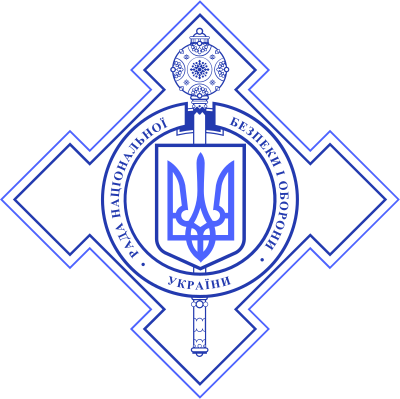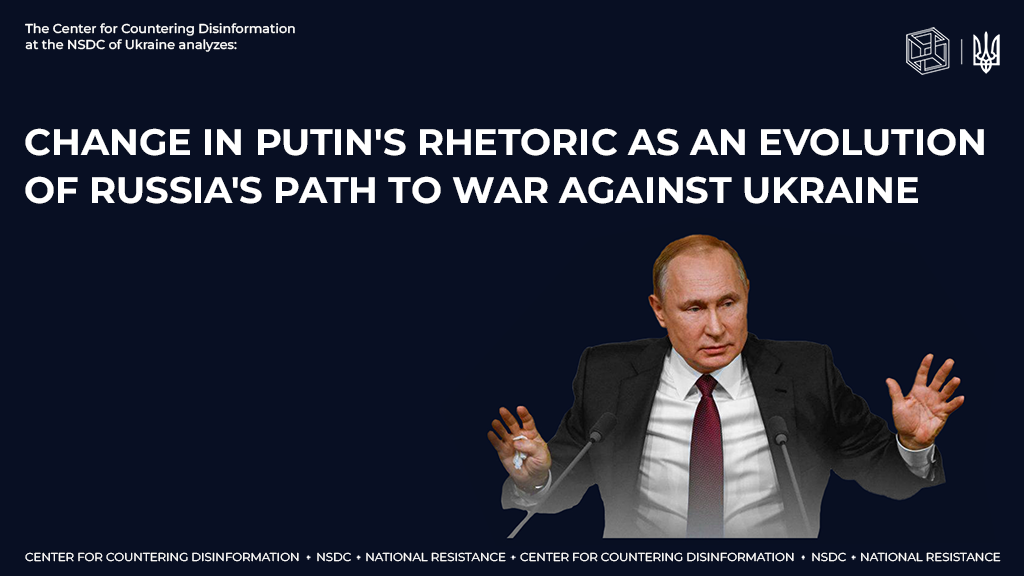At various stages of the preparation of the aggression, putin voiced different goals of russia in the conflict with Ukraine, from resolving the conflict in Donbas to de-Ukrainization and even ending the US dominance in the world.
Therefore, it is quite interesting how the rhetoric of putin’s public statements has changed in recent years.
2001 – “I do not imagine my own country in isolation from Europe and the so-called civilized world. I can hardly imagine NATO as an enemy.”
2002 – “We do not treat NATO as an enemy organization.”
2003 – “Since the collapse of the soviet union, the russian federation has lost tens of thousands of its original territories. Are you proposing to share everything first now? Do you want to return Crimea, part of the territories of other republics of the former Soviet Union to us?”
In 2008 – “Crimea is not a disputed territory; there was no ethnic conflict there, unlike South Ossetia and Georgia. russia long ago recognized the borders of the current Ukraine. The issue of the return of Crimea and Sevastopol has a provocative meaning.”
In September 2013 – “Ukraine once acquired part of the territory at the expense of russia. But it is necessary to proceed from the reality that a significant part of the Ukrainian people values independence, i.e. freedom.”
In February 2014, although putin called the change of power in Ukraine an “armed coup”, he supported the territorial integrity of Ukraine. There were no statements about the federalization of Ukraine at that stage.
Even then, experts advised to be skeptical of putin’s “peaceful rhetoric” regarding Ukraine and the conflict in the East.
In 2021, putin recognized the authorities of Ukraine. And although he criticized Ukraine’s desire to join NATO and the EU, he never announced his intention to deploy troops.
Even against the background of the escalation of the conflict in Donbas in March 2021, putin denied the likelihood of a military invasion and justified the increase of the military presence near the Ukrainian borders with exercises that allegedly do not threaten anyone.
On April 21, 2021, putin made a threatening statement about a “red line” in NATO relations, identified russia as a “third party” in the conflict and emphasized that the Ukrainian authorities need to solve the problems with Donbas with the leaders of the so-called “LNR (LPR)” and “DNR (DPR)”.
putin’s article from July 12, 2021 on the kremlin’s official website “On the historical unity of russians and Ukrainians”, in addition to many manipulations about “common history” already used by russian propaganda, contained the main thesis: “true sovereignty of Ukraine is possible only in partnership with russia.”
From the beginning of 2022, putin spoke more and more obsessively about the threat to russia’s security from the side of NATO in the context of Ukraine.
On February 16, putin recognized the independence of the so-called “DPR” and “LPR”, effectively starting preparations for an attack on the territory of Ukraine.
On the night of February 24, putin announced the start of a “special military operation” under the pretext of changing the country’s political course.
However, with the defeat of the “superb operation”, putin’s rhetoric changed again. In March, representatives of the kremlin began to declare that the task of the “special operation” does not include the overthrow of the current government in Ukraine, the occupation and the destruction of statehood, and Volodymyr Zelensky was once again recognized as the legitimate president.
On March 29, during the ceasefire negotiations, russia expressed its readiness to abandon the “denazification” and “demilitarization” of Ukraine in exchange for the refusal to join NATO.
Subsequently, russia officially changed its rhetoric: drastically reduced military activity in the area of Kyiv and Chernihiv and concentrated its forces on Donbas, the capture of which was called the main goal of “special operations”.
putin’s actions did not go unnoticed by world leaders.
During the public event on June 10, 2022 in California, US President Joe Biden said that the goal of the russian dictator putin is not just a full-scale invasion of Ukraine.
“Over 100,000 russians invaded a country in the heart of Europe at a time when we thought it was impossible. putin is destroying all Ukrainian cultural centers: museums, schools, historical monuments; he is trying to destroy the country’s culture. The idea that we can stand by and let this happen is simply not possible. And that’s why we strengthened NATO and provide assistance to Ukraine.”
The statement of the US leader just once again proves that from the point of view of the way of conducting this war, it is genocidal in nature.
The lack of connection with reality in putin’s official statements shows that putin’s rhetoric changes depending on the failures of his army in Ukraine: from an “all-powerful leader” to a cornered war criminal, ready to forget about the initial boundless ambitions and make compromises.
putin’s russia cannot voluntarily part with its imperial habits and give up its claims on Ukraine.
The kremlin is preparing for a “protracted war” in Ukraine and seeks not only to establish full control over the Donetsk, Luhansk, and Kherson regions, but also to secure land corridors between the annexed Crimea and part of the Donetsk region and to the unrecognized Transnistrian Moldavian Republic (Pridnestrovian Moldavian Republic).
And this does not bode well for the future of russia.
After all, for the sake of the plan to restore the russian federation as an imperial state by occupying other post-soviet countries, the kremlin is ready to sacrifice both Ukrainians and its own people.










